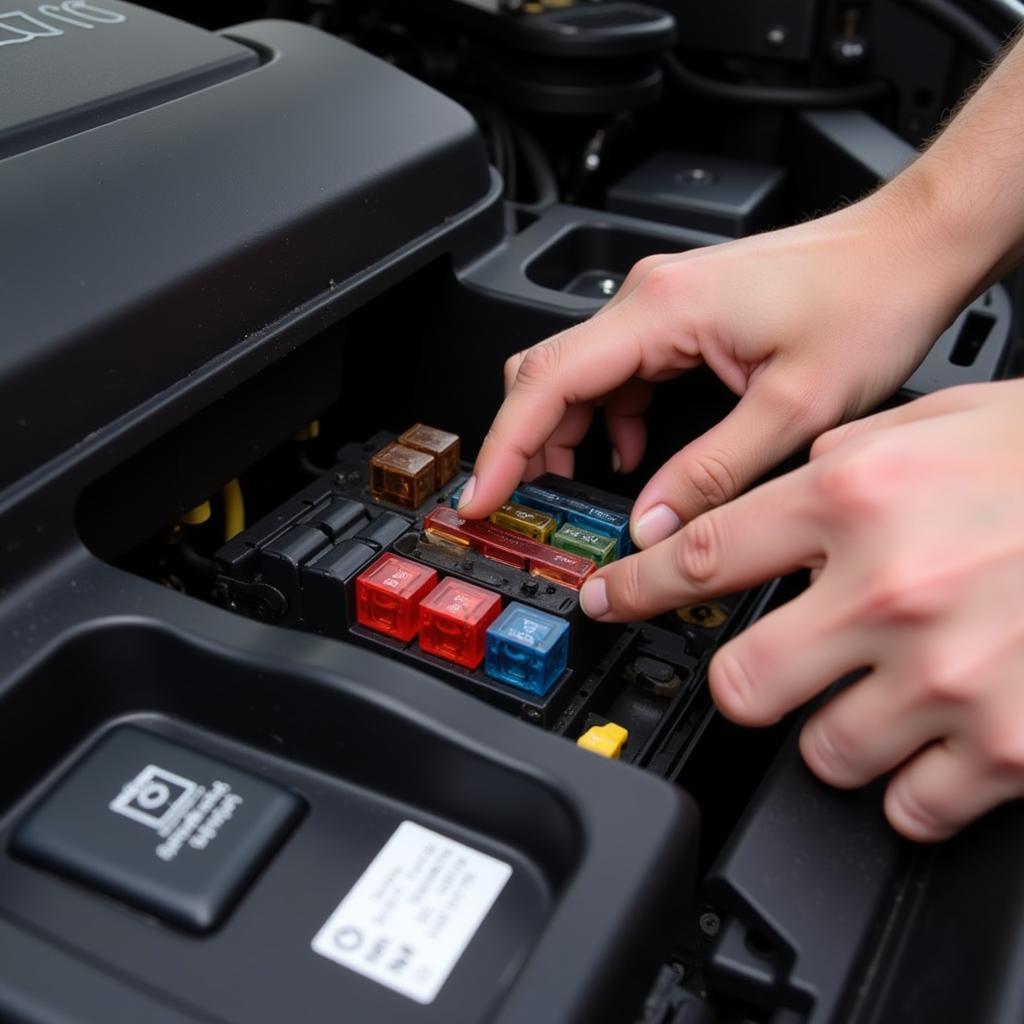Checking a car’s true mileage is crucial when buying a used vehicle. A manipulated odometer can hide a car’s real wear and tear, leading to unexpected repairs and a lower resale value. Using VCDS (Vag-Com Diagnostic System) offers a reliable method for uncovering potential odometer fraud and ensuring you get what you pay for. This article will guide you through using VCDS to check real mileage, understand the limitations, and offer insights into how mileage manipulation affects a vehicle’s overall condition.
Understanding the Importance of VCDS Check Real Mileage
Why is verifying mileage so important? A car with a rolled-back odometer can appear younger than it actually is. This can lead to overpaying for a vehicle that requires more maintenance than anticipated. VCDS offers a deeper dive into a car’s electronic control units (ECUs), potentially revealing discrepancies that a simple dashboard check might miss. It’s a valuable tool for both individual buyers and professional mechanics looking to assess a vehicle’s history accurately. Similar to what can i do with vcds, checking the real mileage is a crucial application.
How to Use VCDS to Check Real Mileage
Using VCDS to check mileage involves accessing different ECUs within the vehicle’s system. The exact location of mileage data varies depending on the make, model, and year of the car. Generally, the engine control unit, instrument cluster, and sometimes the ABS module store mileage information.
- Connect your VCDS interface to the vehicle’s OBD-II port.
- Turn on the ignition but do not start the engine.
- Launch the VCDS software on your computer.
- Select the correct vehicle model and year.
- Choose the appropriate control module (e.g., Engine, Instruments, ABS).
- Navigate to the “Advanced Measuring Values” or “Data Blocks” section.
- Look for data fields related to mileage or odometer readings. These fields might be labeled differently depending on the car manufacturer.
- Compare the mileage readings across different modules. Discrepancies can indicate potential tampering.
Limitations of VCDS Mileage Checks
While VCDS provides a powerful tool, it’s not foolproof. Sophisticated methods of mileage manipulation can sometimes erase traces in commonly checked modules. Furthermore, VCDS requires some technical knowledge to operate effectively. This is where professional expertise comes in handy. If you’re unsure about using VCDS yourself, consulting a qualified mechanic is advisable.
What Can Mileage Manipulation Tell Us?
Beyond the obvious deception about a vehicle’s age, altered mileage can mask a history of hard use. A car with 200,000 miles clocked down to 80,000 may have undergone significantly more wear and tear, impacting engine health, transmission performance, and suspension components.
Why VCDS Stands Out
VCDS’s ability to access multiple control modules gives it an edge over generic OBD-II scanners. These scanners typically only read the mileage displayed on the dashboard, which could be easily manipulated. VCDS goes deeper, potentially uncovering hidden discrepancies. This makes vcds 11.11 2 a valuable asset for those serious about buying used cars.
Is a VCDS Check Real Mileage Guarantee?
Can you fully rely on VCDS to identify all instances of mileage tampering? While it is a powerful tool, some advanced techniques may bypass its detection capabilities. However, VCDS significantly increases your chances of spotting inconsistencies and making informed decisions.
FAQs About VCDS Check Real Mileage
- Can I check mileage on any car with VCDS? VCDS is primarily designed for VAG group vehicles (Volkswagen, Audi, Seat, Skoda).
- What should I do if VCDS reveals different mileage readings? Consult a qualified mechanic for further investigation and assessment.
- Is it legal to alter a car’s mileage? Tampering with a car’s odometer is illegal in most jurisdictions.
- How much does a VCDS scan cost? The cost varies depending on the service provider.
- Can I use VCDS for other diagnostic tasks? Yes, VCDS can be used for a wide range of diagnostic and programming functions.
- Where can I buy a genuine VCDS system? Purchase from authorized distributors to ensure authenticity.
- Do I need any special training to use VCDS? Basic computer skills are sufficient, but some technical knowledge is beneficial.
“Having the ability to cross-reference mileage data across various modules is invaluable. VCDS empowers buyers to make informed decisions, avoiding costly mistakes,” says John Smith, Senior Automotive Diagnostic Technician at XYZ Auto Repair.
In conclusion, using VCDS to check real mileage is a valuable step in assessing a used vehicle’s history. While it’s not a foolproof method, it provides a significantly more in-depth analysis compared to standard OBD-II scanners. Understanding the process, limitations, and potential insights offered by VCDS empowers buyers and mechanics to make informed decisions and avoid the pitfalls of odometer fraud. Remember, a thorough mileage check is a crucial part of any used car inspection.
Need assistance? Contact us via Whatsapp: +1 (641) 206-8880, Email: CARDIAGTECH[email protected] or visit us at 276 Reock St, City of Orange, NJ 07050, United States. Our customer service team is available 24/7. We also recommend checking out our articles on what can i do with vcds and vcds 11.11 2 for more information on how VCDS can assist you with your automotive diagnostic needs.

